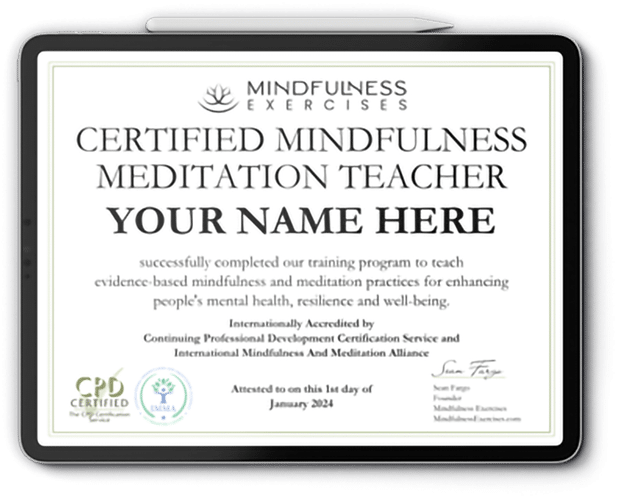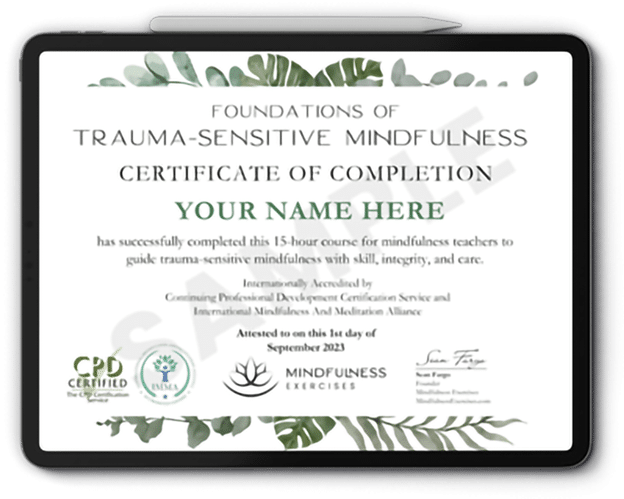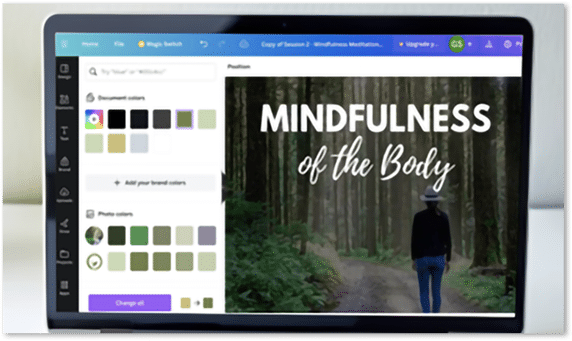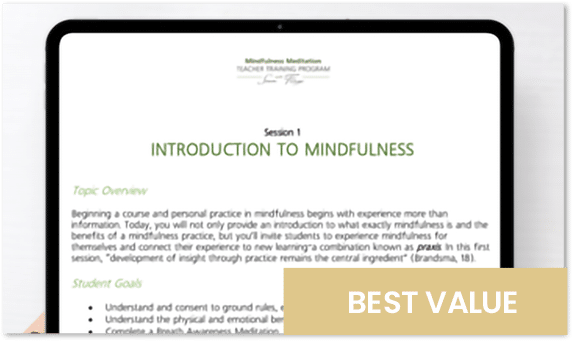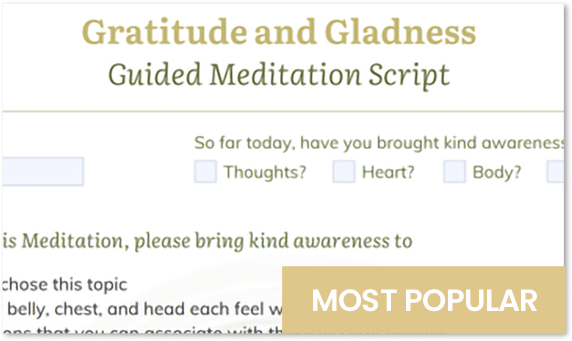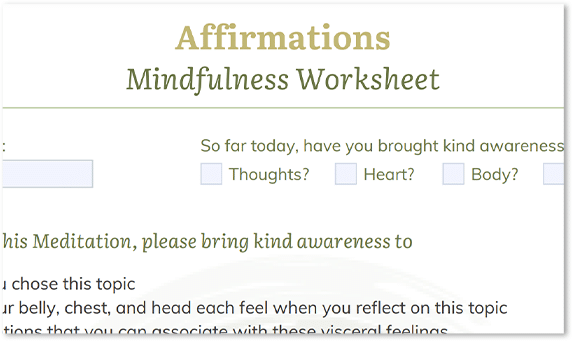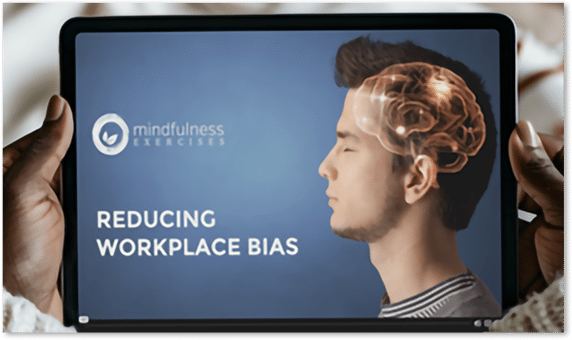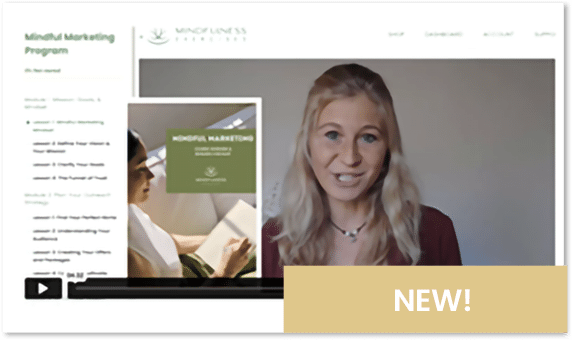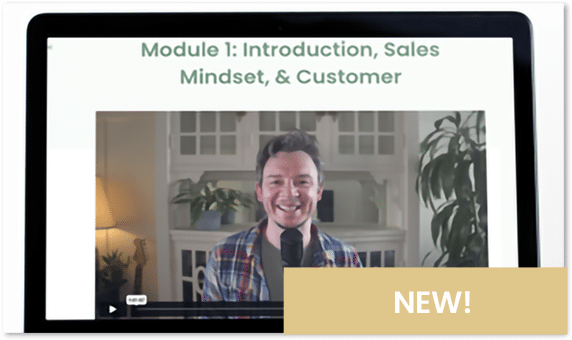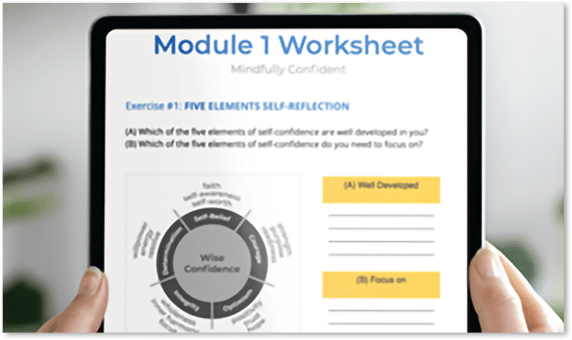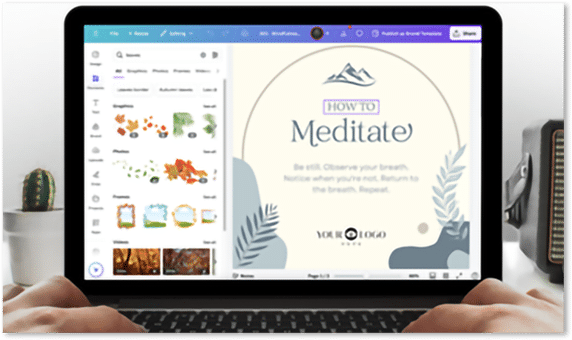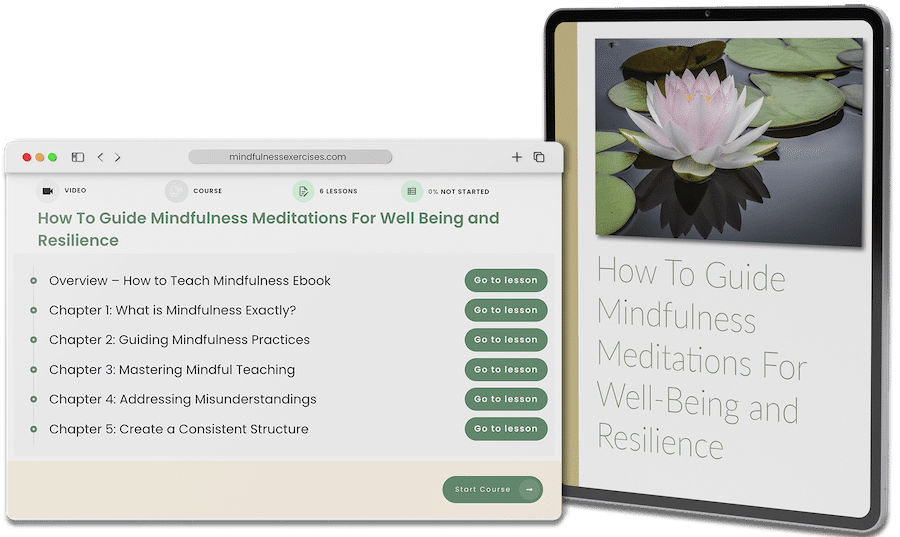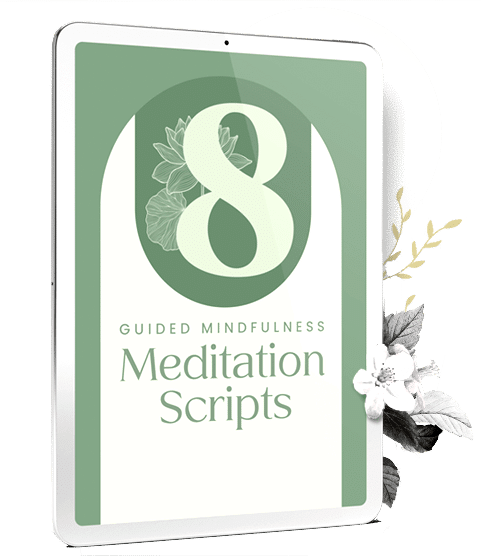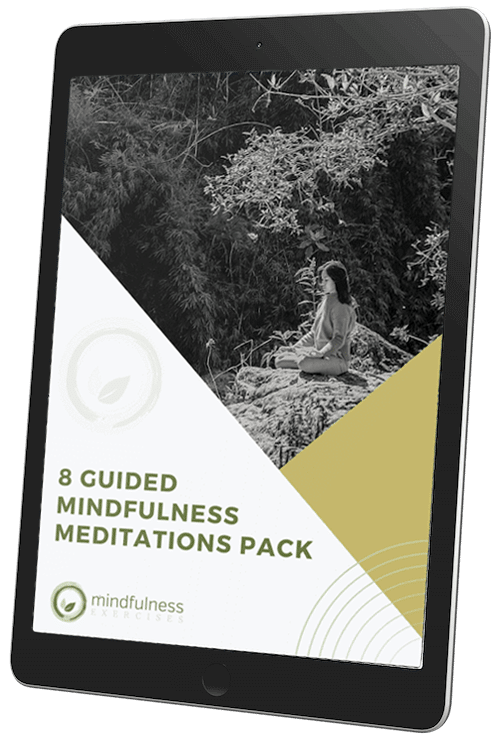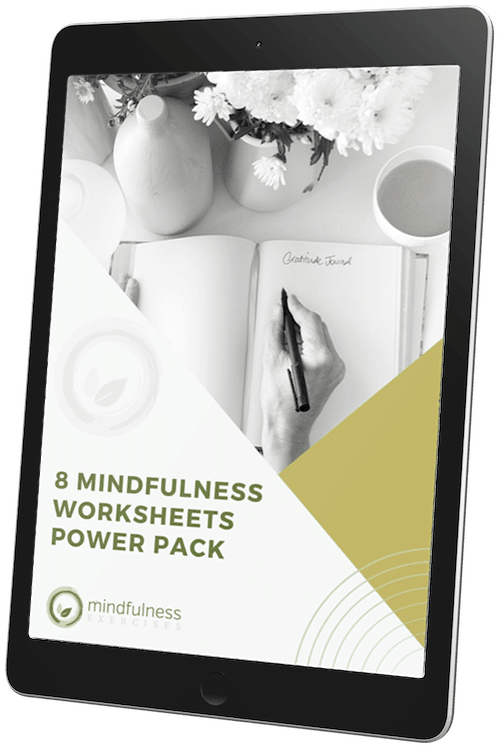
The experience of anxiety is prevalent across the globe. According to the World Health Organization, there are an estimated 264 million people around the world living with some type of anxiety disorder. Beyond this, there are likely countless others who struggle with symptoms of anxiety without meeting the criteria for this classification. Though it’s a problem that weighs heavily on us as individuals and as a culture in many ways, learning to understand and mindfully observe our anxious feelings can help to improve our quality of life. Heightening our sense of inner peace, calm, and contentment. We've come up with 9 Mindfulness Exercises for Anxiety. See below.
Whether we ourselves have experienced anxious feelings or whether someone we know and love struggles with these experiences, anxiety and its associated symptoms affect all of us. Because of its strong prevalence in these modern times, deepening our understanding of anxiety is incredibly important for our collective evolution. Mindfully exploring anxiety can help us to powerfully and positively shift the world we live in – both inside and out.
What is Anxiety?
Simply put, anxiety is the experience of fear, worry, and apprehension. From mild and infrequent bouts of anxious symptoms to strong and more persistent feelings of anxiety, our experience of this human phenomenon greatly varies from individual to individual. While some level of fear and apprehension are normal arisings in human experience, the continual, persistent play of fear in the mind causes us great suffering.
The stress associated with anxiety can initiate our ‘fight or flight’ response, which triggers the body in a variety of ways.
There are various types of anxiety disorders, including but not limited to Generalized Anxiety Disorder, Separation Anxiety Disorder, Social Anxiety Disorder, and Panic Disorder. Not designed to be a substitute for professional treatment where required, this guide is simply meant to fill the gaps where mindfulness has been omitted from our journey towards deeper understanding of our emotions and of our anxious experiences in particular.
How Mindfulness Helps to Manage Anxiety
Mindfulness practice provides us with the tools required to observe the true nature of our present moment reality, helping us to gain clarity that puts anxiety in a new light. Embracing mindfulness promotes healthy management of anxiety in the following ways.
While our thoughts about the past or future can seem all too real at times, the more we practice observing the present moment (which is what mindfulness is really all about), the easier it becomes to let go of the weight of past and future stories.
Mindfulness practice moves out of the ‘fight or flight’ response and into the ‘rest and digest’ system. This system, a part of our parasympathetic nervous system, slows the heart and eases the mind, promoting our overall sense of wellbeing.
Habitual thoughts, beliefs, and associated behaviors (many of which may be linked to anxious feelings) are incredibly strong because of neural pathways that fire nearly automatically based on the stories we’ve learned to accept as truth over the course of our lives. As we mindfully gain control over our thoughts, we rewire the brain by forming new neural pathways. In doing so, we harness thoughts and beliefs that inspire wellbeing.
Research has shown that mindfulness practice helps to regulate emotions. As we start to gain greater insight into and management of our emotions, we lessen our propensity to become lost in anxious thought and feeling.
By deepening our awareness of the physical body, we can encourage physical relaxation (for instance, by releasing tightness in the forehead or contraction in the stomach), promoting peace of mind as well. In this way, we come to understand just how intertwined mind and body really are.
Through mindfulness practice, we begin to shift the ideas we hold about ourselves. Mindfulness has been shown to strengthen positive self-esteem, and it encourages self-compassion. By observing our inner experience with greater self-compassion, we lessen the tension experienced when challenging situations arise.
Dr. Jud Brewer, psychiatrist and bestselling author, shares a clinically-proven, mindfulness-based approach to breaking free from the cycle of worry and fear that fuels anxiety. Discover how mindfulness rewires the brain’s habit loops and learn practical insights on transforming anxiety into curiosity and calm.
Developing a Mindful Mindset
In order to use mindfulness to help manage anxious feelings as they arise, we need to develop a mindful mindset. Practice is the best way to enhance a mindful mind, but there are a few tips we can keep in mind to begin with.
Aiming for perfection is a lost cause when it comes to maintaining a mindful mindset because perfection doesn’t exist in this practice. Since mindfulness is not about viewing certain experiences as ‘right’ or ‘wrong,’ it’s important that we let go of our desire to achieve perfection in our practice.
When developing a mindfulness practice to help manage feelings of anxiety, practicing non-judgment is paramount. It is a foundation of mindfulness and it helps us to open up to whatever our experience is. Rather than denying, invalidating, or pushing aside any feelings, we allow ourselves to come face to face with them. We give them space to breathe so that they can then be released.
We can enhance our mindfulness practice by drawing our attention to the heart anytime our thoughts take off on a tangent or an old, familiar loop. By moving our attention towards the heart space, we open up our capacity for honest and compassionate observation of whatever passes through us.

“One is a great deal less anxious if one feels perfectly free to be anxious.”
Alan Watts
9 Mindfulness Exercises for Anxiety
There are numerous different mindfulness practices that can help to enhance our understanding of the thoughts and feelings that move through us – anxious ones included. Here are 9 different mindfulness exercises for anxiety that can provide us with beneficial tools and insights to help us navigate our way through this challenging life experience.
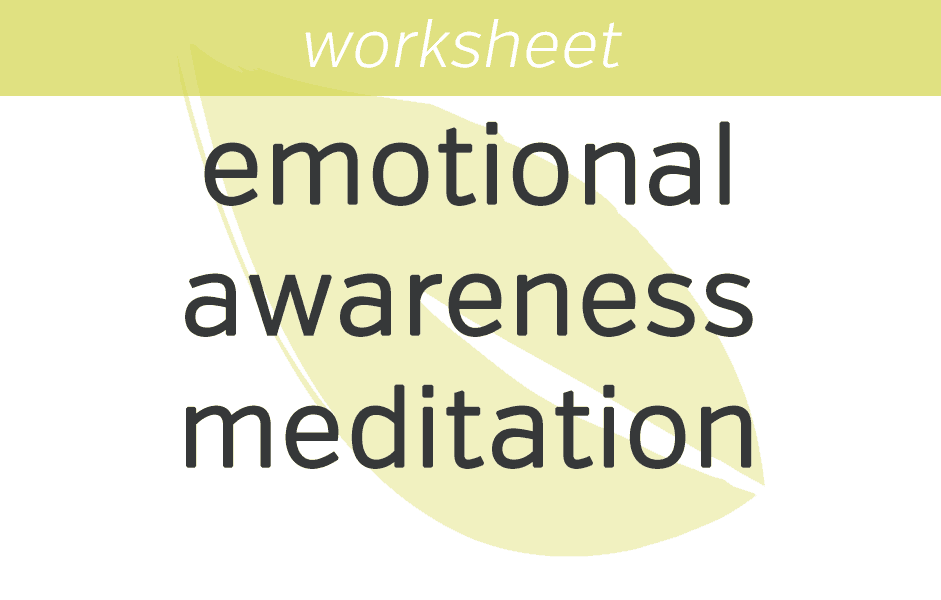
One of the key skills we can learn is that of enhancing our emotional awareness. This online worksheet includes a self-guided meditation to help us to get to know our emotions in a new way. When strong emotions arise, it is not often that we take a moment of pause to investigate what is happening. Through this meditation, you are guided to pay attention to the physiological sensations associated with the rising emotion (anxiety in this case) and to feel it more deeply in the body before letting it go.
When practicing this, it may at first seem as though emotions are becoming stronger, which can be challenging for many people. However, when we find the courage to truly witness the emotions passing through us, we process them and allow them to pass. When we process our emotions, they have less control over our lives, becoming something of the distant past.

We may not be aware of it, but judgment is largely entwined with anxiety. When we feel anxious, chances are we are judging a situation to be threatening (whether the threat is real or perceived). This guided meditation by Tara Brach can help us to investigate the judgment we carry within us so that we can then release it. By naming (or labeling) the presence of aversive judgment within us, we have a greater say over the level of control it has.
This meditation also calls us to recognize our vulnerability, and to let it be. Brach guides us to keep our attention on the pain, or on our woundedness, so that we might bring it to light and pass through it.
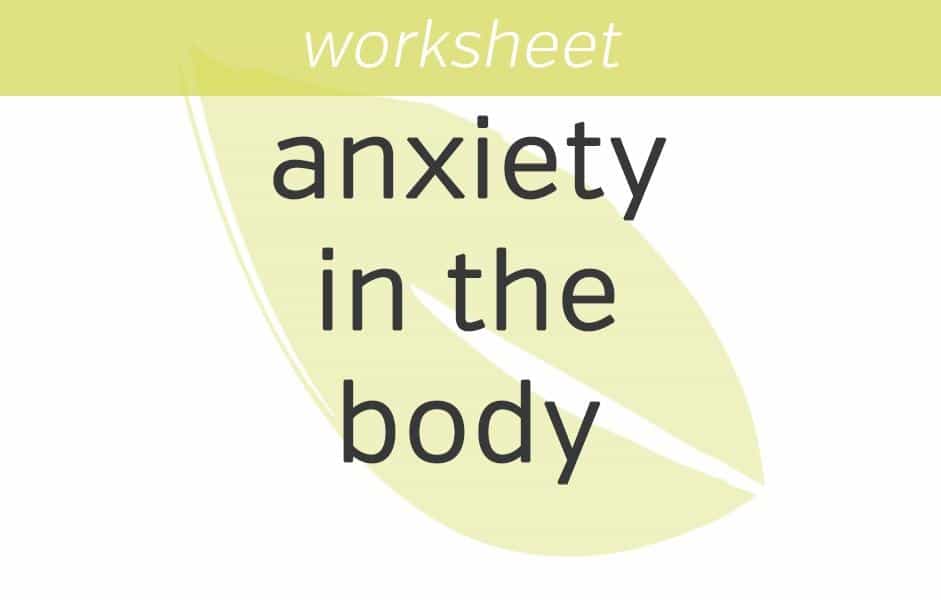
This exercise calls us to really dive deeply into the sensory experience of anxiety. Through this self-guided meditation and accompanying worksheet, you are invited to note the presence of anxiety in the body, to rate how strong it is, and to explore it through visualizing its weight, its shape, its colour, and its size. This practice deepens our sense of self-awareness and brings about a new frame of reference to our experience of anxiety.

This guided mindfulness meditation helps us to become more attuned to the present moment through guiding us to pay close attention to the body. Tara Brach leads this guided body scan to help us explore our present moment experience on a more intimate level. By tuning into the body, we quiet the mind’s tendency to change, to fix, or to seek anything other than what is here right now, softening the presence of any challenging emotions such as anxiety.

Ajahn Chah’s ‘Teachings on Nature’ guides us to embrace a different perspective on our emotions, our mood, and anything else that arises in our awareness. Much of what we can experience we can see reflected in nature. For instance, can we view our rising emotions like passing gusts of wind to understand their true transitory nature? Everything we experience is a part of nature and is entirely natural. How we relate to these natural forces is where our potential for growth really lies.
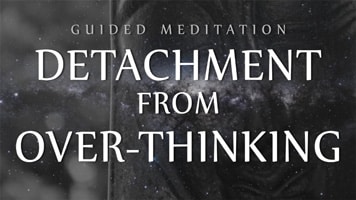
This guided meditation invites us to detach ourselves from the racing mind, a strong sign that anxiety is present. As thoughts arise, this recording guides us to simply allow them – to refrain from judgment, suppression, and any urge to change them – and then to naturally let them go.
By understanding that we are far beyond what our thoughts dictate, we come into a deeper sense of peace. Witnessing thoughts as shooting stars coming for just a brief moment helps us to detach from the incessant stream these thoughts tend to pull us into.

This mindfulness meditation worksheet guides us to take a walk through nature and to open ourselves attentively to our peaceful surroundings as we do. Walking in nature is a deeply healing practice that is of great benefit in this modern world.
When in nature, many people experience a sense of deep renewal – emotionally, physically, and spiritually.
The natural world sparks something innate and healing within us while settling the busy mind. As you walk, open your senses completely, walking slowly and mindfully, opening yourself up to the healing that is available here.

Beneath our anxiety is a current of fear. Joseph Goldstein’s guided meditation on ‘Working with Fear’ guides us to open up to our true experience, whatever that may be in any moment. Our capacity to sit with our experience – regardless of how uncomfortable or painful it might be – strengthens as we start to push the boundaries of what we find ourselves capable of opening to.
As we open up to our fear – to our anxiety – we start to understand these feelings for what they are: empty images in the mind that have somehow become associated with feelings and emotion. It can be a challenging inquiry for many, so we are invited to take our exploration slowly and at our own pace. However, clear-sightedness of our emotions grows and as it does, we benefit from its great healing potential.
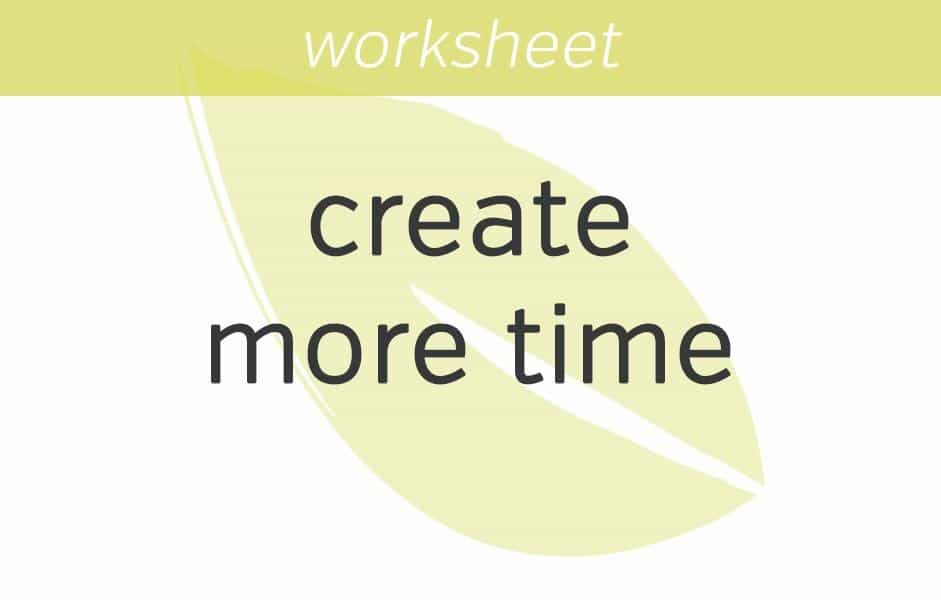
This guided mindfulness meditation helps us to become more attuned to the present moment through guiding us to pay close attention to the body. Tara Brach leads this guided body scan to help us explore our present moment experience on a more intimate level. By tuning into the body, we quiet the mind’s tendency to change, to fix, or to seek anything other than what is here right now, softening the presence of any challenging emotions such as anxiety.

“Feelings come and go like clouds in a windy sky. Conscious breathing is my anchor.”
Thich Nhat Hanh
Whenever you are moving through anxious or other difficult emotions, ensure that you are harnessing a sense of self-compassion for what you are going through. Anxiety is an all-too-common experience that many of us struggle with – you are not alone.
To help solidify your mindfulness practice, you can join in on the free 100-day mindfulness challenge. By committing to a daily practice, we strengthen our ability to pass through challenging feelings and emotions with ease.
About Me


Sean Fargo
Mindfulness Exercises Founder
Sean Fargo, founder of Mindfulness Exercises and the Mindfulness Exercises Institute, is a highly sought-after mindfulness teacher, coach, and consultant. After spending two years as a Buddhist monk and assisting world-renowned mindfulness leaders like Jack Kornfield at Spirit Rock Meditation Center, Sean went on to share his own gifts and wisdom with the world. Facilitating personal growth in everyone from individuals and aspiring mindfulness teachers to celebrities and executives at Fortune 500 companies, Sean is committed to supporting collective mindful evolution across the globe.
References
1 Depression and Other Common Mental Disorders: Global Health Estimates. Geneva: World Health Organization; 2017. Licence: CC BY-NC-SA 3.0 IGO.
2 Publishing, H. (2011). Understanding the stress response - Harvard Health. [online] Harvard Health. Available at: https://www.health.harvard.edu/staying-healthy/understanding-the-stress-response [Accessed 3 Jul. 2019].
3 Willard, C. (2016). A Basic Meditation to Strengthen Neural Connections - Mindful. [online] Mindful. Available at: https://www.mindful.org/a-basic-mindfulness-practice-to-strengthen-neural-connections/ [Accessed 3 Jul. 2019].
4 Guendelman, S., Medeiros, S. and Rampes, H. (2017). Mindfulness and Emotion Regulation: Insights from Neurobiological, Psychological, and Clinical Studies. Frontiers in Psychology, 8.
5 Xiao, Q., Yue, C., He, W. and Yu, J. (2017). The Mindful Self: A Mindfulness-Enlightened Self-view. Frontiers in Psychology, 8.


